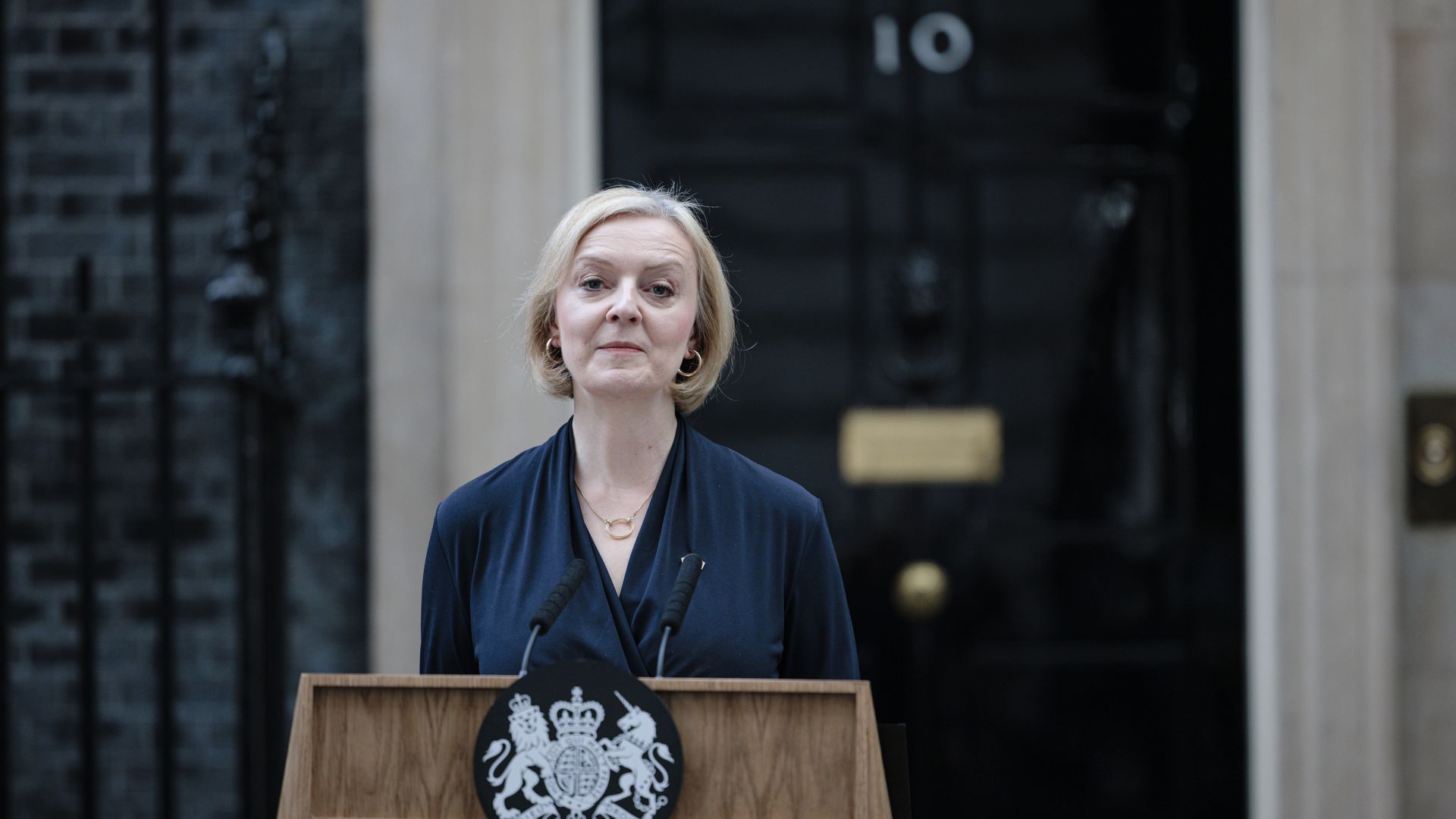The U.K. will by next week have its fifth prime minister since the 2016 Brexit referendum — the same number as in the previous 37 years.
Why it matters: The aftershocks of Brexit are still defining and dividing the Conservative Party, as Truss’ swift ascent and swifter descent make clear.
Flashback: David Cameron promised a referendum during his winning election campaign in 2015 to settle his party’s long-standing internal squabble over EU membership.
- Cameron and most senior Conservatives campaigned against Brexit. When they lost, Cameron resigned, Theresa May (a fellow “Remainer”) came in, and the infighting only deepened.
- May’s core challenge was to balance the promises of the Brexit campaign — “taking back control” on immigration and trade — with the need to preserve relations with a bloc that accounted for half of trade and shared a land border with the U.K. in Northern Ireland.
- Most voters, and indeed most politicians, didn’t initially seem to grasp the bedeviling tradeoffs required. May was unable to navigate a path between Brexit purists and pragmatists and stepped down after three difficult years.
Then came Boris Johnson, who called and won an early election promising to “get Brexit done.”
- That 2019 election, and Johnson’s tenure more generally, saw the party’s MPs and its electorate shift from Cameron-esque centrism to a more hardline vision on Brexit, immigration and trade.
- For a large swath of the Conservative Party, faith in Brexit has been packaged together with a general suspicion of expertise and institutions, and a belief that an unshackled U.K. can stand tall as a global power.

Truss, a Remainer-turned-Brexit hardliner, was the purest possible manifestation of that shift.
- When Johnson fell due to a string of scandals, with key Brexit questions still unresolved, the right flank in Parliament and in the broader party membership coalesced around Truss.
- When rivals and critics warned that slashing taxes while spending big on energy subsidies would supercharge inflation and interest rates, she called it “project fear” — an echo of the pro-Brexit campaign.
- Then, after economic turmoil did indeed come to pass and Truss was forced to ditch most of her platform, her right-wing former allies joined the centrist skeptics in demanding her resignation.
What's next: With the party's approval ratings at an all-time low, and an election looming in two years (or much sooner), the downtrodden Tory MPs must now decide to whom to turn. Many are emphasizing party unity while disagreeing about which contender can deliver it.
- Fans of former chancellor Rishi Sunak, whose warnings about Truss’ tax plans now look prescient, think he could begin to restore the party’s tattered reputation for economic prudence.
- Supporters of House of Commons leader Penny Mordaunt contend that, as a fairly moderate Brexiteer, she can bring together the opposing flanks.
- A similar case can be made for Defense Secretary Ben Wallace, who declined to run over the summer but has been widely praised for his handling of Ukraine.
- Hard-liners like Suella Braverman and Kemi Badenoch — two former leadership candidates who later joined Truss’ Cabinet — could credibly claim today's Tory party has moved toward them and away from the squishy center.
- Then there’s the man who led the Brexit campaign, won the Conservatives their current majority, and is reportedly inclined to throw his hat in the ring: Boris Johnson.
The bottom line: The post-Brexit identity crisis has played out with the Conservatives in power. A true reset might not be possible until they lose it.
Go deeper: Liz Truss just became the U.K.’s shortest-tenured PM







